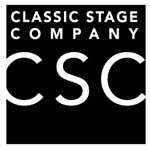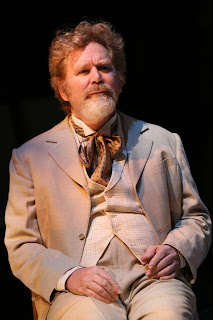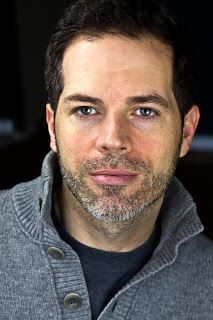If you missed our March 19 Saturday Symposium, here's an interview with Shakespeare scholar James Shapiro. Professor Shapiro recently sat down with Double Falsehood dramaturg Joe Cermatori to discuss Shakespeare's long-lost play.
What can you tell us about the cultural situation between Spain and England at the end of the sixteenth century, after the defeat of the Spanish Armada, and how the literary output of this period reflects the larger cultural situation? What accounts for the possibility of Cardenio in Jacobean England, given all the anti-Spanish dramas of the Elizabethan period?
There’s a sea of change in English drama and its treatment of Spanish materials that takes place some time in the early seventeenth century. We go from the vilification of the Spanish as untrustworthy, Catholic Machiavels to a much more nuanced and perceptive response to Spanish materials, and especially to Cervantes.
For me, this story begins in 1604 with the Treaty of London. Elizabeth never made peace with Spain. Both the English and the Spanish—not only in 1588, but in the subsequent armada attempts that never came to fruition—were like a couple of prize fighters that had punched each other, punch drunk but neither had knocked out the other. The financial cause of maintaining a state of belligerency was far too great, and there were too many areas of common interest—not religious, but commercial—so, when King James comes to the throne in 1603, there’s peace made in the Treaty of London.
There’s a nice little Shakespearean angle to all this: in August of 1604, as a member of the King’s Men, Shakespeare and his fellow company members are called in by James to, how should I put it, look good in their red livery as members of the royal retinue for the Spanish embassy. So, for eighteen days in a row that August, Shakespeare’s hanging out with, and trying to flesh out James’s corps with the Spanish embassy. For all we know, there was some kind of intellectual and artistic conversation between the English and the Spanish parties.
In 1605, Cervantes writes and publishes Don Quixote, which is almost immediately recognized in England. Once you have an English embassy go to Spain, discover the intellectual culture there, and report back on it, you have these doors opening. I suppose the analogy is to the opening up of East European writings after the fall of the Berlin Wall and the end of the Soviet Union. All of a sudden, people who perceived each other to be enemies are now engaging in all kinds of exchange: economic exchange, cultural exchange. How do we know this? We know this from looking at, say, Ben Jonson’s use of Don Quixote in stuff he’s writing around 1610-1611: Epicoene uses it, The Alchemist uses it. Probably the first person to touch down on this is George Wilkins who collaborated with Shakespeare on Pericles: he writes a play called The Miseries of Enforced Marriage where one of the characters says, “Now I am armed to fight with a windmill.” When you can say this on stage, and have people in the house get the allusion, people are talking about and using this great, great source, even though Thomas Shelton’s translation of Don Quixote didn’t appear in English in published form until 1612. Other writers are using it, you find it in Michael Drayton, Thomas May, you find it in Thomas Overbury, you find it in Middleton’s Your Five Gallants, everybody’s doing a little reading and dipping into Cervantes, even before it’s translated.
Once it’s translated that accelerates. It’s translated by Shelton and published in 1612. Shakespeare and Fletcher almost surely collaborate on a play called Cardenio, which relies on Cervantes’ plot and which we know was performed at Court a couple of times in May and June of that 1613—once, in part, for the Spanish representative at this time.
A last thing I would say: by the end of the first decade of the seventeenth century, the Italian sources had really been tapped out—all of those Italian novellas, and Shakespeare had wrung Plutarch dry, had gotten everything out of Holinshed’s Chronicles that he was going to. You’re always looking for a new, brilliant, and powerful source of inspiration. Boom! You have a brilliant work of art (you can call it the first novel, but I don’t think anybody registered it in that way) that is also commenting upon works of art, its tradition, and what formed it. For somebody who’s creating plays within plays, and always meditating, as recently as The Tempest, upon art reflecting on itself, this was great stuff.
Did Cardenio, or Don Quixote for that matter, change how Spaniards were represented on stage?
I don’t think it’s the drama that leads with that. One of the things that King James hoped to do in order to secure peace in Europe was to arrange a series of dynastic marriages with his children and Catholic rulers in Europe. So for instance, he marries his daughter Elizabeth off to a Protestant Prince in the Hapsburg monarchy. He had planned or had hoped to marry his quite Protestant son Prince Henry, but Henry died unfortunately in 1612. He was the crown prince, and James had planned to marry him off to perhaps a member of the Spanish Royal family. James himself married Anne of Denmark, who had converted to Catholicism. So from the top down, there is a move away from the sharp hostility to Spain that had prevailed in the previous decade. After this there’s some tension that we see in plays like A Game of Chess by Middleton, and later in the seventeenth century, where you have again this residual anxiety about Spain. So it’s not being driven by the drama. The drama is responding from the bottom up to the political environment changing from the top down.
We know that famous quip from Charles V that he spoke Spanish to God, Italian to women, French to men, and German to his horse, but what was the status of Spanish language fluency for the average Londoner in early modern England?
That’s a good question. That’s something you can trace in certain ways. Nowadays, if you wanted to know what the state of the world is or was, or what percentage of undergraduates are studying Chinese and what percentage are no longer studying German or Russian, you’d look to schools to see that. In Jacobean England, you’d look for language guides that are published and 1605 sees this really major language guide. People are picking this up, people realize if they’re going to do commerce in Spain, trade with the Spanish, they have to know the language. I think there had been a couple of other language guides from the early 1580s, but I’m not exactly sure. But that tells you that it is going beyond a small group of people who already have Latin cold from their school days and have picked up French and Italian. It’s not that huge a stretch at that point, if you know those three languages, to read Spanish with the help of a dictionary.
Shakespeare probably knew as much Spanish as he needed. We know he had French. We know he had Latin. And we know he was reading a lot of sources, but you don’t get a lot of other Spanish sources in Shakespeare. So could he have read Don Quixote in the originals? Possibly. I don’t sense anywhere in his works between 1605 and 1612 little bits of Cervantes or other Spanish writers bubbling up. You only get it after Shelton publishes this really terrific translation. I think it’s significant that it wasn’t until Shelton’s translation came out that he and Fletcher reached into Cervantes to get this story. So if Shakespeare had rudimentary Spanish, maybe his Spanish wasn’t that good. Little Latin, less Greek, less Spanish.
Many Spanish plays from this period use tragicomic techniques, or have tragicomic resolutions. We get the same thing in this play, and throughout Shakespeare’s late plays, in which the endings are deeply ambiguous or perplexing. Does this amount any degree of cultural influence from Spain?
Here’s a chicken and egg question. Tragicomedy is the defining genre that is emerging at the end of the first decade of the Jacobean theatrical world. Now is that in part driven by stuff washing up from Spain? I don’t really think so, but I don’t know. I think that after a run that includes Hamlet, Macbeth, Lear, Coriolanus and Timon of Athens, it’s really hard to keep pushing tragedy. You get Webster and The Duchess of Malfi, but the deep tragic vein is tapped out in certain ways. Also the move away from tragedy may be because of the new indoor theatres that catered more to a wealthier audience willing to pay three times as much to see a play at Blackfriars. Maybe this accounts for the turn towards tragicomedy, which, if you will, is more romantic, and has more to do with the damsel-in-distress quality that even a play like Cardenio probably had. So does it dovetail with these kinds of Cervantine plots and with the Spanish drama in the seventeenth century? Sure. Is it influenced by it? Probably not. But sometimes cultural changes occur in tandem and sometimes they occur independently, and it seems as if these are going in tandem, though sometimes they’re influential, mutually influential.
This is not an area that scholars have delved into deeply enough, but happily the Cardenio possibilities are going to generate more scholarship on this. So if you ask me the same set of questions in five years I will have more accomplished answers. Maybe not deeper ones, but I’ll be able to fill in these details a little bit more. You know when I think of Spain I’m thinking of William Lithgow’s travel narratives—“The Spanish grabbed me and they tortured the hell out of me and now I’m back! Those crazy inquisitorial Spanish are dangerous!” But I don’t know enough about all that was coming in from Spain.
One other nice little bit: now at the Folger Shakespeare Library there’s a lovely second Folio from 1632, one that came from Spain and that was in possession of English Catholics there who were training in Spain to become priests. And it was doctored by the Inquisition which obviously went through all the books available: so plays in which the Spanish are vilified early on in Shakespeare’s career, such as Measure for Measure, they just ripped that play out, it was irredeemable for them. The Merchant of Venice… all these problematic plays are marked up. So, it’s a two-way street, the Spanish were not all that keen on how the English and Shakespeare represented them, and that wonderful, marked-up, censored text tells a story about how complicated cross-cultural influence was.
Tell us more about the court performances you mentioned. Is it true The History of Cardenio might have been played on the dual occasion of the marriage of James’s daughter and the funeral rites for his son?
That’s kind of reading it through Hamlet, I suppose. We know that there were of plays performed at the marriage of Princess Elizabeth in May, so we know the company had to produce a lot of plays and this is one of the plays that were produced at that time. It’s very tricky, though. I don’t think Shakespeare wrote it for court production. Everything he wrote was first staged at the Globe or Blackfriars as well. He’s not writing a play that’s for a court occasion. The last thing I want anybody to think is that Shakespeare was an occasional dramatist, that he was writing for particular events. If he wanted to do that he would have written court masques, which he never did. He’s a commercial playwright, there’s commercial appeal and this play had it, whatever this play was.
That is to say, we no longer have Cardenio. All we have is an early 18th century gut renovation of a restoration, a gut renovation of a Jacobean play. Let’s say we’re walking along the streets of New York City. We’re downtown, say, and we’re walking where New Amsterdam once was. There’s pavement, and beneath that there’s cobblestone, and then there’s stuff beneath that. Or another way of looking at it is—as anybody who has ever owned an old house knows—houses are renovated, and after a while they undergo a gut renovation, in which you take out everything but the walls and the air. That’s what this play is. Another example: we have King Lear that dates from 1606, and we also have Nahum Tate’s 1681 version of King Lear, which supplies a happy ending. Imagine trying to reconstruct Shakespeare’s version of King Lear from Nahum Tate’s. And then imagine we didn’t have Nahum Tate’s but we had an early eighteenth-century adaptation of the Nahum Tate, that’s the degree of difficulty we’re trying to get at.
Now do I still feel, do I still see those post and beam timbers, especially in act one of the play? I do. Do I think that Theobald would have been capable of recreating a kind of faux Jacobean language? Some people think so. I actually don’t give him that much credit. I think there will be a backlash within a year saying maybe this is all a Triple Falsehood– that is to say, a falsehood inflicted upon Double Falsehood by Theobald in claiming this play to be something Shakespearean. But I don’t actually think so. I think that this is a very important play to do because whatever changes that restoration adaptation made to its Jacobean original, this play still tells us a lot about Shakespeare that we otherwise would not have known.
The Shakespeare connection really comes from Moseley’s booklist in the 1650s. He was a bookseller in London, and he lists this play, Cardenio, by Fletcher and Shakespeare. Almost surely, there’s no reason to think that that’s a forgery or fabrication. There was a manuscript of Cardenio in the 1650s that maybe one day will turn up in somebody’s attic, or some great house in the UK—that’s not an impossibility. Then we’ll be able to answer these questions a little better. But what’s significant is: first, it tells us that Spanish sources are now shaping English dramatic writing; and second, that late in his career, Shakespeare collaborated with Fletcher or five of his last ten plays, and those plays change our understanding of where Shakespeare sought inspiration and what kind of writing he was doing at the end of his career. For that alone it’s worth thinking about and seeing this production.
What would have been the extent of Shakespeare’s involvement, given that Fletcher was his co-author?
If you look at a collaboratively written play from the beginning of Shakespeare’s career, like Titus Andronicus, you can see that Shakespeare was the junior partner in the collaboration. George Peele writes the beginning and end, and Shakespeare does the rest. One of the models that Shakespeare was familiar with was, “All right: I’m gonna do the beginning, I know how it ends, you finish the rest.” The only play we have that shows a kind of active collaboration back and forth that doesn’t fit that model is Timon of Athens where you really get a sense of two people sitting in a room, either one is dictating and the other is writing, or they’re going back and forth and figuring out. So a collaboration could simply be, “I write the beginning, you write the end, and let’s figure out how to mesh these.”
But does this mean Double Falsehood is the gut renovation of a house in which Shakespeare only worked on the plumbing? Or just did the tile work?
I’d look at it the other way, I’d look at it as Shakespeare coming in and saying, “I’m establishing the dimensions, I’m doing the basic architectural changes, and you just come in and do the wiring and plumbing.” Shakespeare was the concept guy, and Fletcher was the wiring. Even that’s a little facile, since each writer has different strengths. Fletcher was really good at stuff that either Shakespeare was not good at or not interested enough in being good at, and vice versa. It’s the same with any other kind of collaboration. So, Shakespeare’s probably most engaged with that opening scene, with that opening act. And of course part of that is lost. There was almost surely some kind of rape scene involved in act one, and that’s not something that would have survived into a Restoration, let alone early eighteenth-century version.
The Royal Shakespeare Company’s going to be staging what they’re going to call Cardenio rather than Double Falsehood. I was just over there this summer, working with them on it, talking with them about it. The director, Greg Doran, is reconstructing the scenes he believes would have been in there in Shakespeare. He’s very intelligent, but it’s about as speculative also as you necessarily have to get. He’s being very careful and reaching out to the scholars who know the collaborative Shakespeare very well. But those are the choices available to us. Do we try to recreate something, or do we go with Gary Taylor’s recreation of it, or do we go with Stephen Greenblatt’s collaboration with Charles Mee and try to bring this play one more step into the twentieth and twenty-first centuries with a different kind of collaboration? All those are very useful ways of trying to understand what was set in motion when England made peace with Spain, and Cervantes hit the shores of England and inspired a lot of great writers.







